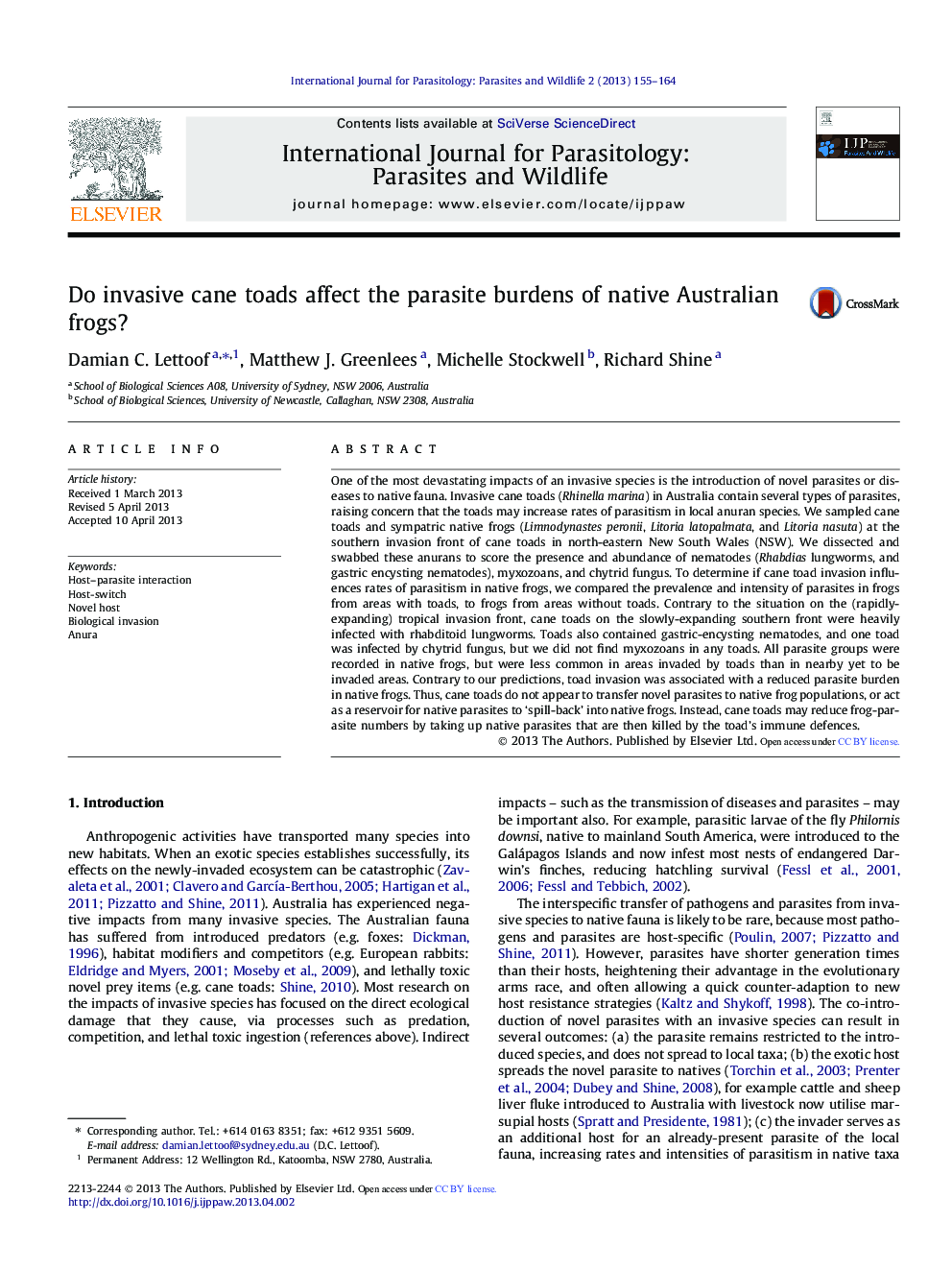| Article ID | Journal | Published Year | Pages | File Type |
|---|---|---|---|---|
| 2055289 | International Journal for Parasitology: Parasites and Wildlife | 2013 | 10 Pages |
•We examine cane toads from the southern invasion front for parasites and pathogens.•We compare the parasitism of native Australian frogs sympatric with cane toads.•Invading cane toads do alter the parasites or pathogens of native Australian frogs.
One of the most devastating impacts of an invasive species is the introduction of novel parasites or diseases to native fauna. Invasive cane toads (Rhinella marina) in Australia contain several types of parasites, raising concern that the toads may increase rates of parasitism in local anuran species. We sampled cane toads and sympatric native frogs (Limnodynastes peronii, Litoria latopalmata, and Litoria nasuta) at the southern invasion front of cane toads in north-eastern New South Wales (NSW). We dissected and swabbed these anurans to score the presence and abundance of nematodes (Rhabdias lungworms, and gastric encysting nematodes), myxozoans, and chytrid fungus. To determine if cane toad invasion influences rates of parasitism in native frogs, we compared the prevalence and intensity of parasites in frogs from areas with toads, to frogs from areas without toads. Contrary to the situation on the (rapidly-expanding) tropical invasion front, cane toads on the slowly-expanding southern front were heavily infected with rhabditoid lungworms. Toads also contained gastric-encysting nematodes, and one toad was infected by chytrid fungus, but we did not find myxozoans in any toads. All parasite groups were recorded in native frogs, but were less common in areas invaded by toads than in nearby yet to be invaded areas. Contrary to our predictions, toad invasion was associated with a reduced parasite burden in native frogs. Thus, cane toads do not appear to transfer novel parasites to native frog populations, or act as a reservoir for native parasites to ‘spill-back’ into native frogs. Instead, cane toads may reduce frog-parasite numbers by taking up native parasites that are then killed by the toad’s immune defences.
Graphical abstractFigure optionsDownload full-size imageDownload as PowerPoint slide
